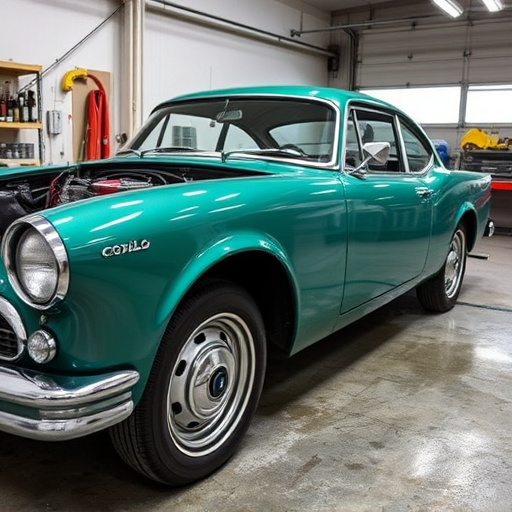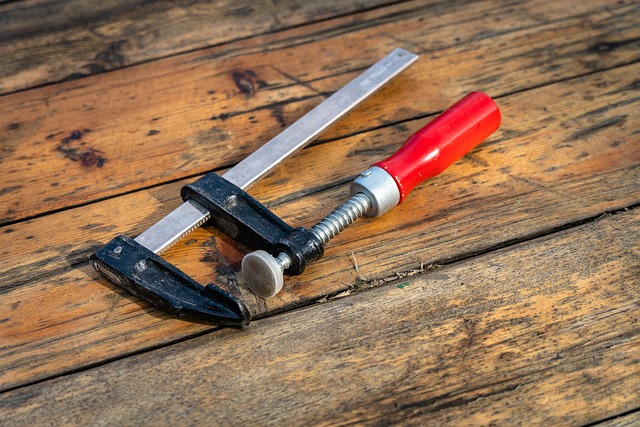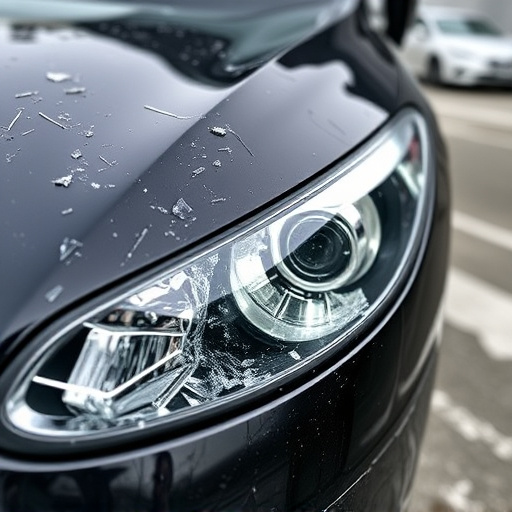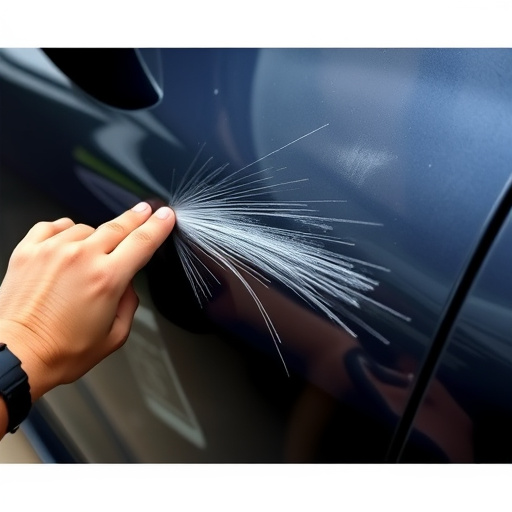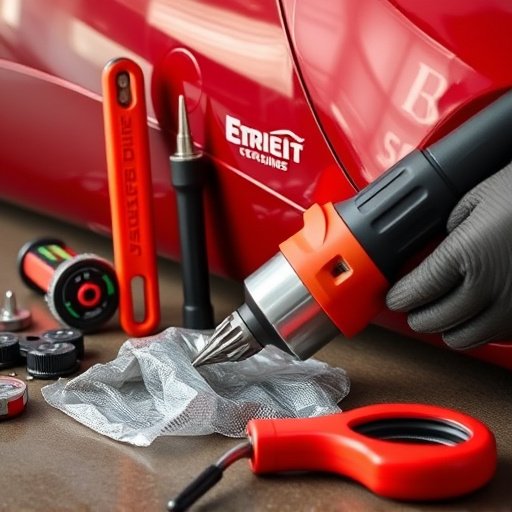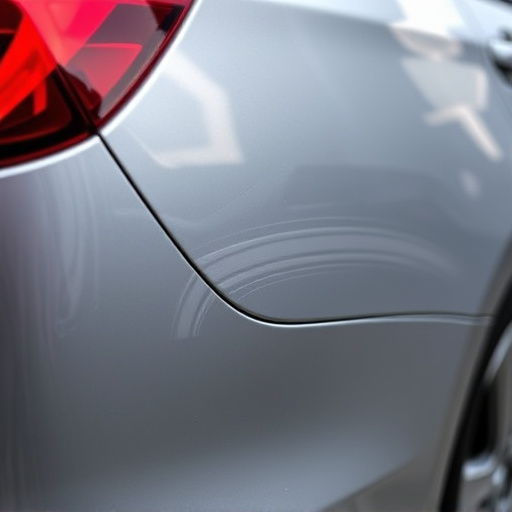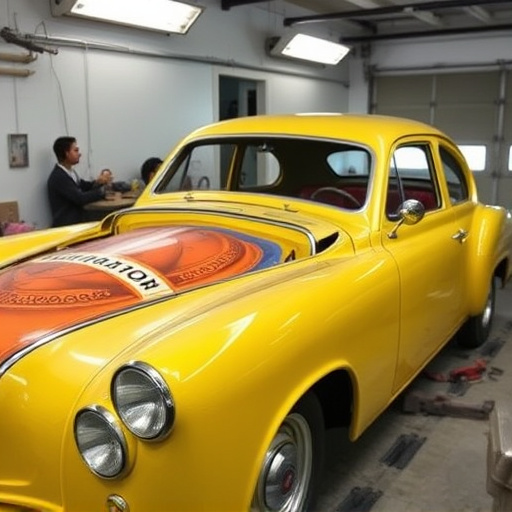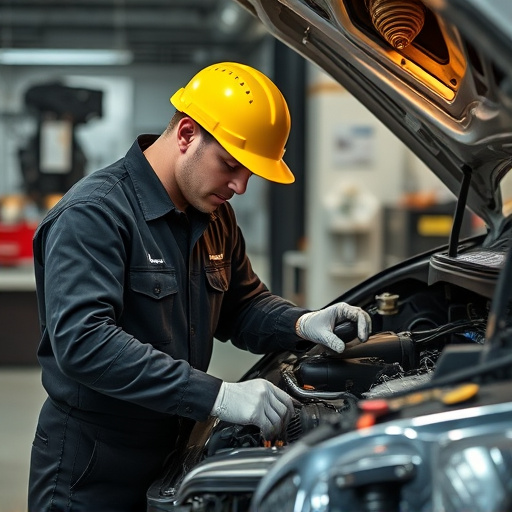Factory seam duplication is a precise collision repair method, utilizing advanced tools and digital mapping to restore car bodies to pre-accident condition. This technique demands specialized equipment like laser scanners, precision scalpels, and high-grade paint applicators for accurate replication of seams. Strategic surface preparation, including cleaning, degreasing, and scratch repair, enhances results. For severe damage, car paint repair methods contribute to overall precision in factory seam duplication.
Unparalleled precision is key in achieving flawless factory seam duplication. This intricate process demands a meticulous approach and the right tools to replicate seams seamlessly across materials. In this article, we delve into the heart of the matter, exploring the essential tools required for accurate factory seam duplication. From understanding the process to mastering techniques, gain valuable insights to ensure consistent, high-quality results.
- Understanding Factory Seam Duplication Process
- Essential Tools for Seamless Duplication
- Techniques to Ensure Accurate Results
Understanding Factory Seam Duplication Process

Factory seam duplication is a precise process that involves replicating the original factory seams found on automotive bodies during collision repair or frame straightening. It’s an intricate technique aimed at restoring vehicles to their pre-accident condition, ensuring structural integrity and aesthetic harmony. This method requires a deep understanding of the car’s design, as well as specialized tools and expertise.
The process begins with meticulous disassembly, where skilled technicians carefully remove panels and components surrounding the damaged area. Once exposed, the existing seams are meticulously measured, mapped, and documented for reference. Subsequent steps involve using advanced equipment like laser scanners or 3D cameras to capture the seam’s exact dimensions and contours. These digital blueprints serve as guides during the reproduction process, ensuring accuracy in creating new seam panels that perfectly match the original factory specifications.
Essential Tools for Seamless Duplication

To achieve accurate factory seam duplication, a variety of specialized tools are essential. These tools play a crucial role in ensuring that every detail, from curve to crease, matches the original design perfectly. Among the most important are high-precision cutting and sanding equipment, capable of making intricate cuts and smoothing surfaces with minimal deviation. This includes industrial-grade cutters and sanders designed for consistent performance and fine control.
Additionally, the use of template guides and alignment aids is vital for maintaining accuracy throughout the duplication process. These tools help in aligning panels and ensuring seams align precisely. For auto collision centers and auto painting shops offering factory seam duplication services, investing in these essential tools is paramount. They not only streamline the workflow but also guarantee superior quality results, enhancing customer satisfaction and reputation, especially when it comes to intricate automotive repair services.
Techniques to Ensure Accurate Results

Achieving precise factory seam duplication requires a combination of advanced techniques and meticulous attention to detail. First, utilizing specialized tools designed for automotive painting and repair is paramount. These include precision scalpels, fine-to-coarse sandpaper, and high-quality paint applicators. By employing these instruments, technicians can accurately match the original seam’s shape and contour, laying the foundation for flawless duplication.
Additionally, proper preparation of the surface is key to successful factory seam duplication. This involves meticulous cleaning, degreasing, and priming to ensure a smooth base for painting. Techniques such as wet sanding and using scratch repair kits help eliminate imperfections, allowing for a seamless blend between old and new paint. In cases of extensive damage or vehicle restoration, car paint repair methods can be employed to rebuild and refine the affected areas, contributing to overall accuracy in duplication.
Accurate factory seam duplication requires a deep understanding of the process and the right tools. By adhering to the essential techniques outlined in this article, manufacturers can achieve seamless duplicity, ensuring product quality and consistency. Embracing these practices will streamline production, enhance efficiency, and ultimately contribute to a robust manufacturing strategy centered around precise factory seam duplication.

